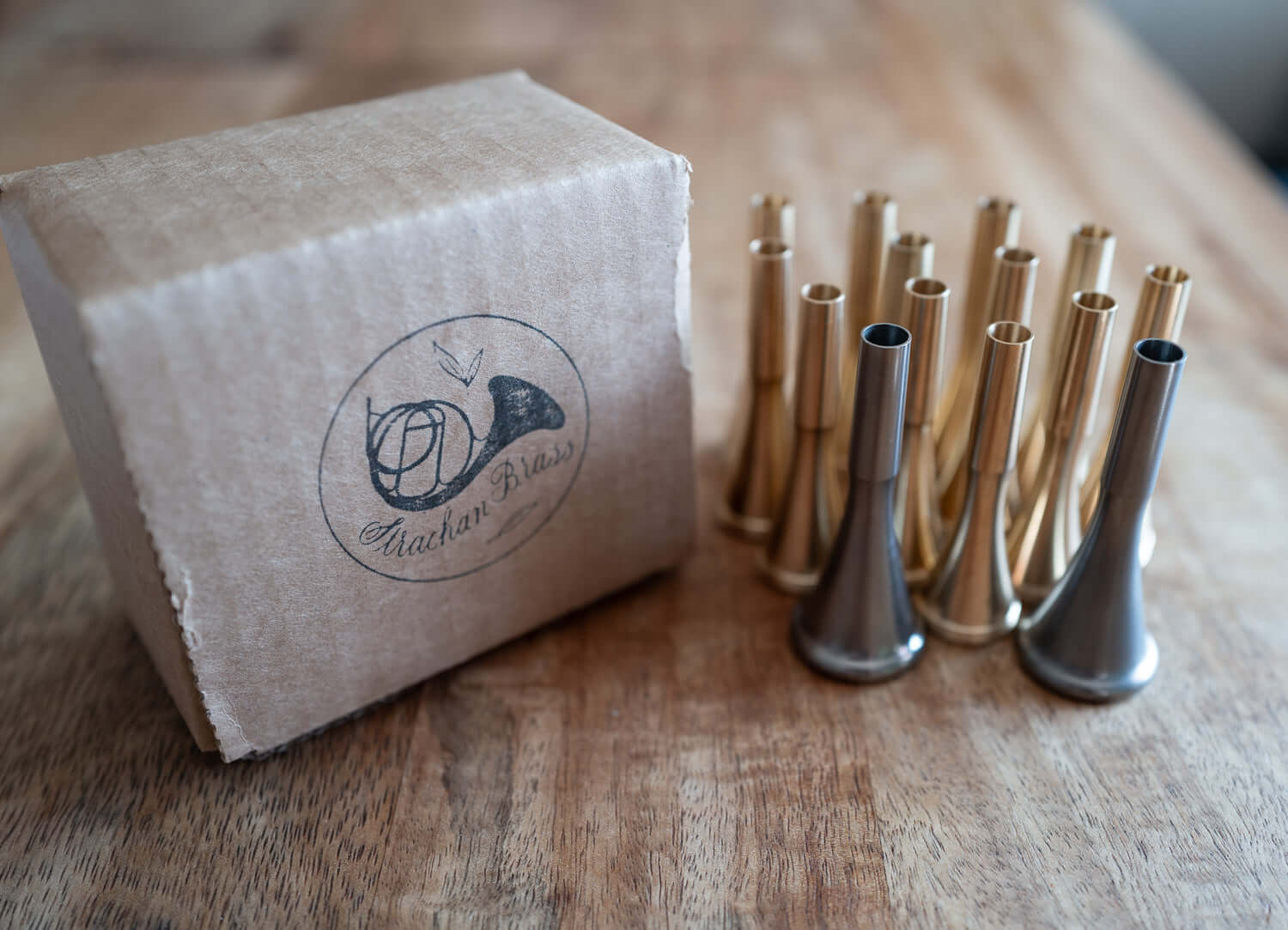A new video by horn player Mars Gelfo features an interview with mouthpiece maker Alex Strachan (owner of Strachan Brass), and it’s a fascinating look into how different parts of a horn mouthpiece interact—for better or worse—with various types of French horns. It dives into why some mouthpieces just seem to work so much better with certain horns or for certain players.
Full disclosure up front: I’m definitely not 100% unbiased. I have a couple of Strachan Brass mouthpieces myself, and I think they’re great. But I did actually buy them, and I’m not getting any sort of compensation for sharing this interview (although, honestly, a few free mouthpieces would be the most tempting affiliate marketing scheme ever for me).
You can check out the full video below, and if you’re curious about what goes into designing a mouthpiece, or if you’re searching for tips on finding one that really works for you (or a student), I highly recommend giving it a look!
Mouthpiece “First Principles”
There are a few core principles you should know before I get into the deeper stuff from the video. Think of these as “mouthpiece first principles” to keep in mind before you start going down the rabbit hole:
A mouthpiece is an impedance adapter between your buzz and the acoustical megaphone that is your horn.
The rim is for the player, the cup is for the horn.
An endurance challenge is really an efficiency challenge.
- Above high C, the short wavelength of those notes can’t (easily) follow the bell’s curvature—even with your right hand in the normal spot. That’s why notes don’t “slot” well above high C. You can compensate with a very straight and far-in right hand position, but then your intonation goes out the window elsewhere.
Surprising Insights
Even though I’m super interested in mouthpieces (maybe a little too much), and I’ve done a lot of reading and experimenting, I actually learned a ton from this interview. Some of these were things that I knew but I didn’t know why, and other things were totally new.
This next section’s a bit longer—but if any of these points grab your interest, I really recommend watching the whole video. The natural conversation and musical examples make the concepts much clearer than just reading about them:
- Players using more of an “ansetzen” embouchure (where the rim extends above or below the red of the lips) seem to do best with “reverse-peak” rim contours, which help pull the embouchure in toward the aperture. These players usually prefer slightly larger inner diameters and thicker rims, since it gives more room for their embouchure setup.
- Players using more of an “einsetzen” embouchure—with the mouthpiece rim completely inside the red of the lips—can often use a mouthpiece with a smaller inner diameter, even though it feels bigger because of how their embouchure is formed. This is probably why some players sound great on mouthpieces that feel almost microscopic to me. (And it explains why Holton Farkas models are favorites among some players.)
- Many players have a gut instinct that V-shaped cups sound darker, but acoustically a bowl-shaped cup actually gives better resonance for the lowest harmonic—and a darker sound. The funnel (or V-shaped) cups create a sound with more upper harmonics (so it can sound more interesting), but those upper partials don’t travel far. So from the back of a big hall, you’ll sound darker than you do close up.
- A horn bell is basically a (reverse) rocket nozzle. Cool.
- The real difference between American and Euro shank mouthpieces is about the rate of taper, not just size. The tip of an American mouthpiece is slightly smaller than a Euro, but the big thing is the taper: Euro shanks taper more gradually, so they stick out farther if you use them on an American horn. You can also tell how a horn and mouthpiece are mismatched (American mouthpiece in a Euro horn or a Euro mouthpiece in an American horn) based on where the mouthpiece wiggles.
- Too much or too little “prominence” (the part of the mouthpiece shank sticking out from the leadpipe) can lead to out-of-tune octaves. That’s a good hint that the mouthpiece shank isn’t quite right for your horn. There isn’t one “correct” amount—every horn is a bit different.
- Playing fast passages when testing isn’t really about how horn and mouthpiece interact—it’s more about your interaction with the mouthpiece. Subtle, but important!
- The spot where the cup, bore, and backbone all meet is where all the magic happens (or doesn’t). This area basically determines almost everything about response and sound.
- Heavier mouthpieces let you play off-center more easily, which can make intonation more flexible… but also, until you’re used to it, can mean more missed notes because you can “wander” off course more subtly.
Final Thoughts
All in all, this video turned out to be a really neat (and definitely nerdy) deep dive into what you should think about when shopping for a new mouthpiece.
If you’re even a little bit of a horn nerd (and if you’ve read this far, I’m guessing you are), you should definitely give it a watch! And if you’re looking for a new mouthpiece, check out the options over at Strachan Brass!


Leave a Reply
You must be logged in to post a comment.